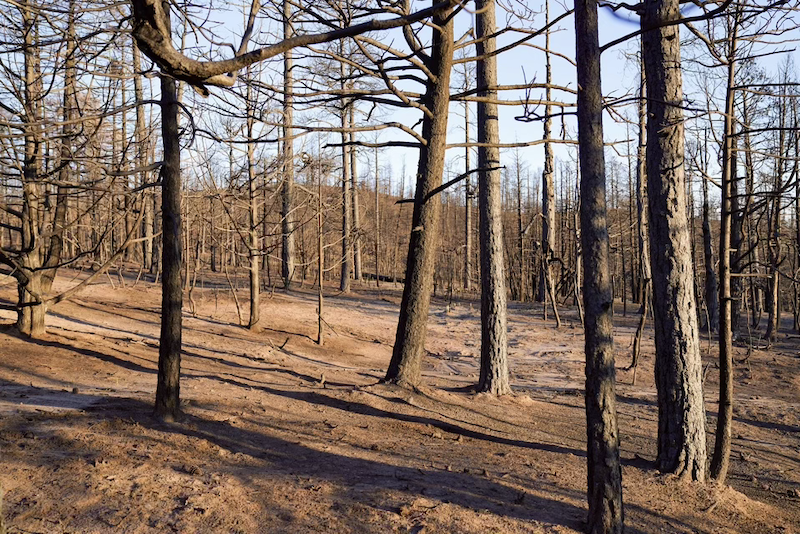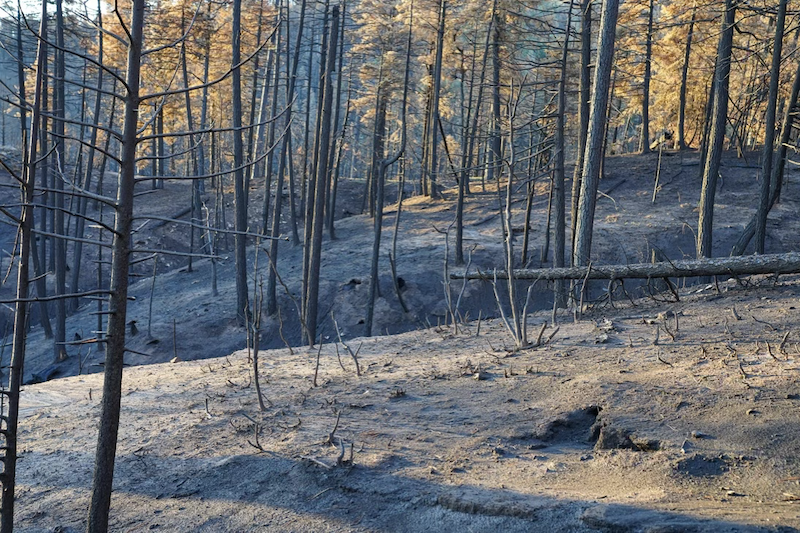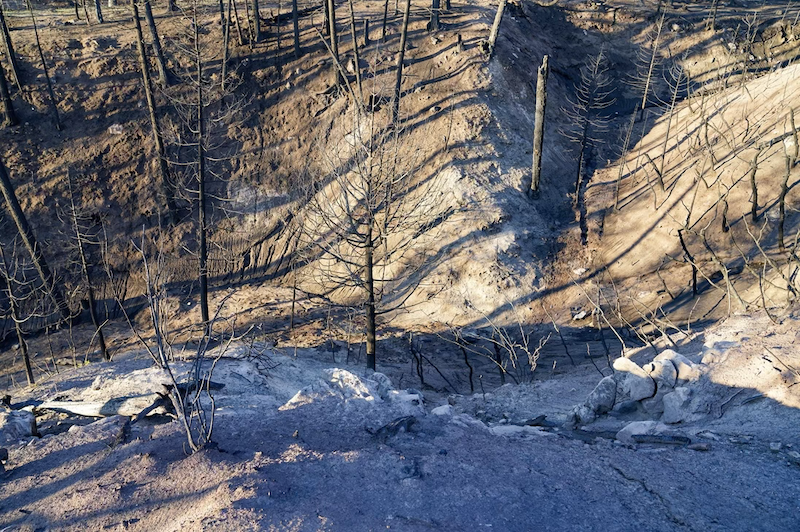|
By Jarred Conley On June 11, 2025, the Rio Arriba County Board of Commissioners formally recorded a ban on certain fireworks at the County Clerk’s office. The order stated the ban would remain in place “until such time as the Board of County Commissioners determines that the hazardous fire conditions presently existing decreased to a level considered safe for such use.” Just nine days later, on June 20, County Fire and Emergency Services Chief Enrico J. Trujillo issued a full countywide burn ban due to extreme drought. While only the fireworks ban was formally recorded, both measures were shared publicly on social media. These actions were clear and designed to protect the public. Despite these restrictions, the Santa Fe National Forest pursued a different course. On June 25, a lightning strike ignited what became known as the Laguna Fire. By June 30, the fire measured just 176 acres. Allegedly, that initial burn had run up against a cliff and stopped spreading due to natural terrain, which should have provided the Forest Service time to fully secure it. Instead, the agency announced it would “actively manage” the fire, planning to expand it through aerial and hand ignitions across some 13,000 acres. Under policies the Forest Service has created for itself, a “managed” fire does not have to be ignited directly adjacent to the original lightning strike — the ignition area can be a considerable distance away. This distinction gave the agency wide latitude to conduct new burns under the umbrella of wildfire management, even as local bans prohibited residents from lighting so much as a firework. The contradiction could not be sharper. While local residents were barred from lighting even small fireworks or campfires, the federal government proceeded to intentionally ignite thousands of acres of forest. By mid July, the fire had escaped containment lines, forcing firefighters to deploy shelters, and ultimately burning 17,415 acres. Property and livestock were lost, and public confidence eroded again. The Forest Service has consistently circulated photographs that highlight only the low to moderate burn areas, presenting the Laguna Fire as if it were an ecological success. Yet my own photographs document areas where the forest burned at 100 percent, leaving nothing behind. Those images tell a different story, one that is just as much a part of the fire’s legacy as the carefully selected images used in agency updates. While it is true that some areas burned in the way managers intended, no old growth pine, no rancher’s cows, and no wildlife was worth torching in the middle of June to prove a point about “managed fire.” In the end, the Santa Fe National Forest used its own policies and loopholes to prove a point that it can do what it wants, regardless of local restrictions or public cost. This raises a troubling policy question. Under the Prescribed Burn Approval Act of 2016, the Forest Service is prohibited from conducting prescribed burns during “Extreme” fire danger unless coordination with state and local officials occurs. But the Act does not apply to lightning caused wildfires, which can be managed using the same ignition tactics under a different label. That loophole allowed the Laguna Fire to expand well beyond its original footprint, despite county burn restrictions. It is still unclear whether all other federal policy requirements, including coordination and reporting obligations, were met before this strategy was authorized. What is clear is the double standard: county leaders, with fewer resources, enacted and recorded bans to keep residents safe, while the federal government pressed forward with a massive ignition effort in the same extreme conditions. As Brad Butterfield reported in the Rio Grande Sun on September 11, 2025, the fire’s aftermath has left many northern New Mexico homeowners facing an insurance crisis. One resident who built a modern, fire-resistant home on land with virtually no trees still had her policy canceled, despite her efforts to mitigate fire risk. Another saw his annual premium nearly quadruple in just a few years, forcing him into a punishing deductible that would be impossible to cover if a fire actually occurred. These stories show how the Forest Service’s decision to manage, rather than suppress, the Laguna Fire has deepened financial and emotional strain for people who had already followed local restrictions and acted responsibly to protect their properties.
The Laguna Fire is more than a policy failure, it is a reminder of the human cost when federal agencies gamble with fire under extreme conditions. Families who followed county restrictions now face higher insurance bills or no coverage at all, while the agency that expanded the fire shields itself behind a loophole. If trust in fire management is to be restored, Congress must act to ensure that local bans are honored, loopholes are closed, and the people who live with the consequences are finally placed at the center of the decision-making.
2 Comments
Sara Wright
10/3/2025 07:15:32 am
This kind of cognitive dissonance is a perfect example of the insanity embraced by the culture at large. We are so full of hubris that humans believe they can 'manage' nature although nature is no w demonstrating that humans might be wrong.
Reply
Emily Vigil
10/3/2025 05:31:18 pm
Thank you Jarred. We like the forest are forever scarred in the aftermath of the Laguna Fire and like the forest are struggling to recover.
Reply
Your comment will be posted after it is approved.
Leave a Reply. |
Submit your ideas for local feature articles
Profiles Gardening Recipes Observations Birding Essays Hiking AuthorsYou! Archives
October 2025
Categories
All
|




 RSS Feed
RSS Feed